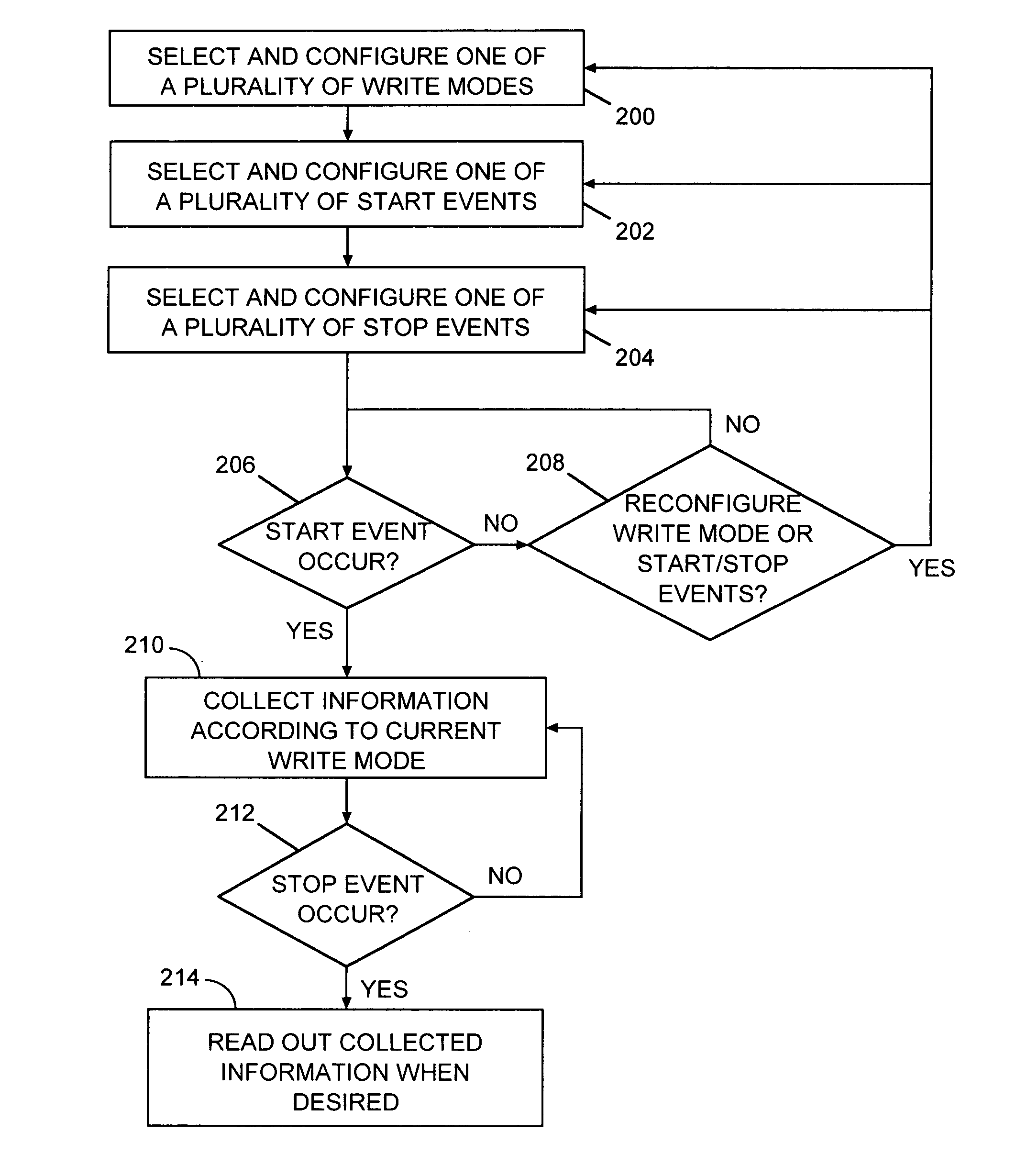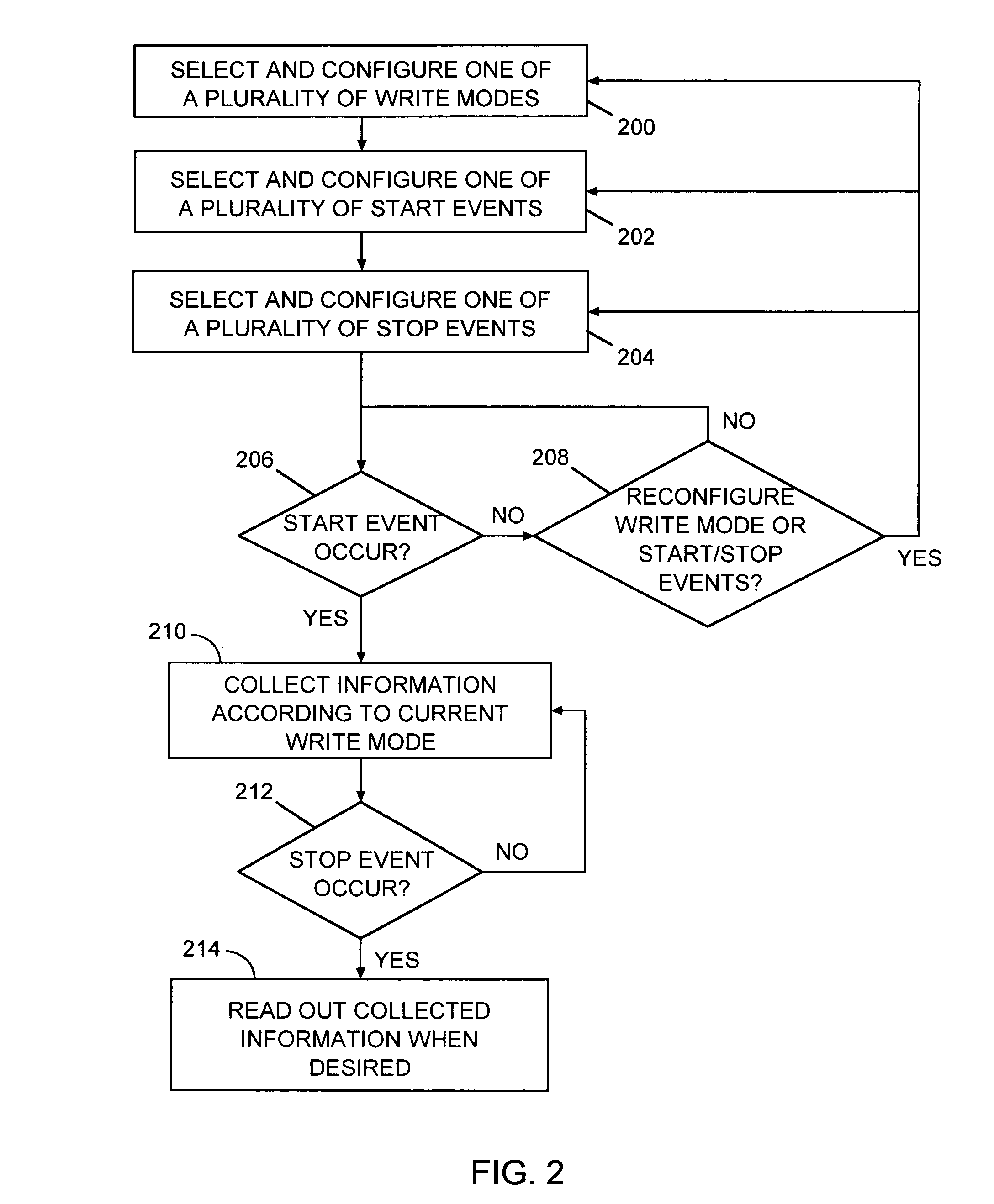Method for controlling and collecting information in a data processing system
a data processing system and information collection technology, applied in the field of computing system testing and servicing, can solve the problems of increasing difficulty in collecting information for testing, debugging and servicing, and still involving manual testing, and achieve the effect of accurately targeting the most relevant information
- Summary
- Abstract
- Description
- Claims
- Application Information
AI Technical Summary
Benefits of technology
Problems solved by technology
Method used
Image
Examples
Embodiment Construction
[0022]Generally, the present invention provides a system and method for selectively collecting information within logical modules of a computing system. Multiple groups of information content are determined in advance, and the particular information content to be analyzed can be selected. A flexible data collection mechanism is provided, whereby numerous collection commencement events and termination events are defined to allow great flexibility in when and which information is to be collected. The invention allows the most relevant information relating to a situation or circumstance to be targeted, rather than simply gathering volumes of information, which results in lengthy analyzation and inherent inefficiencies.
[0023]While the present invention is particularly advantageous in the context of a multi-processing data processing environment as described below, it will be appreciated by those skilled in the art that the invention is equally applicable to other computing environments ...
PUM
 Login to View More
Login to View More Abstract
Description
Claims
Application Information
 Login to View More
Login to View More - R&D
- Intellectual Property
- Life Sciences
- Materials
- Tech Scout
- Unparalleled Data Quality
- Higher Quality Content
- 60% Fewer Hallucinations
Browse by: Latest US Patents, China's latest patents, Technical Efficacy Thesaurus, Application Domain, Technology Topic, Popular Technical Reports.
© 2025 PatSnap. All rights reserved.Legal|Privacy policy|Modern Slavery Act Transparency Statement|Sitemap|About US| Contact US: help@patsnap.com



